Key takeaways:
- A title tag is your page’s most important headline, as it guides search engines and users to your content.
- An effective title tag strikes a balance between being optimized for keywords and being compelling enough to attract a human click.
- The impact of a title tag goes beyond search, making it a key element for professional-looking link previews on social media.
When a user performs a Google search, several links appear, each competing for the user’s attention. To ensure people click on your link, pay special attention to your title tag. It’s like a short description that tells people what your page is about.
In this article, learn about what a title tag is and how it affects your search rankings.
What is a title tag?
A title tag is an important HTML element that specifies the title of a web page. It’s displayed on SERPs as the clickable headline for a given result. It’s important for usability, search engine optimization (SEO), and social sharing.
Title tags are a primary cue to both search engines and visitors. They indicate the content and context of the web page, making them integral to search engine success. It can also make the difference between standing out or being overlooked.

Examples of title tags
Effective title tags are concise, compelling, and reflective of the page content. For example, the title “Expert SEO Tips for 2025: Boost Your Website’s Ranking” is informative and keyword-rich. It’s also engaging enough to encourage users to click through search results.
Here’s what a title tag looks like from search engine results pages (SERPs):
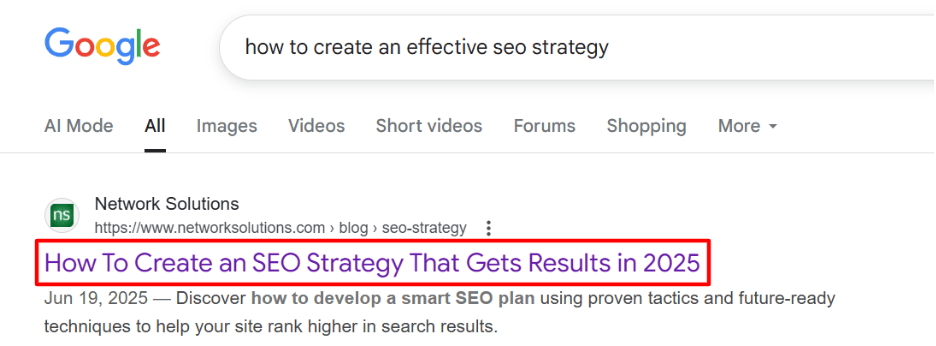
In the browser tab:

On social media:
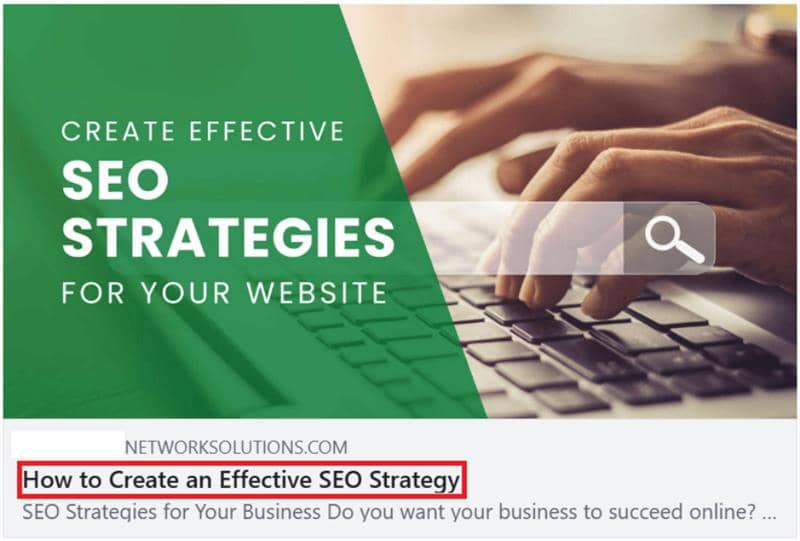
It’s one thing to understand what makes a good title tag, but seeing real examples is what brings those concepts to life. The table below shows the difference between a generic title tag and one that’s been specially crafted for SEO and user engagement.
| Industry/site | Generic (bad) title tag | Optimized (good) title tag | Why it works |
|---|---|---|---|
| Blogging/content | Shoes: A Complete Guide | The Best Running Shoes for Men in 2026: A Buyer’s Guide | The optimized title is specific, includes the primary keyword (“running shoes for men”), a long-tail keyword (“best running shoes”), and the current year to show it’s up to date. The word “Guide” also sets the expectation of comprehensive, helpful content, improving click-through rate. |
| eCommerce | Apple iPad for Sale | Buy Apple iPad Pro 11-inch (2026) | The generic title is too simple. The good title includes a clear call-to-action (“Buy”), specific product details (“iPad Pro 11-inch,” “2026”). This makes it highly relevant for a user ready to make a purchase. |
| Educational/service | Learn about Investing | How to Start Investing: A Beginner’s Guide for Millennials | The generic title is vague. The optimized title targets a specific audience (“Millennials”) and a clear intent (“How to Start Investing”). The use of “Beginner’s Guide” promises easy-to-understand content, which can increase clicks from new investors. |
| Local business | Pizzeria in New York City | Best Pizza in Greenwich, NYC – Authentic Neapolitan Pies | The generic title is too broad. The good title narrows the focus to a specific neighborhood (“Greenwich”), includes a strong descriptor (“Best”), and highlights a unique selling point (“Authentic Neapolitan Pies”). This attracts local customers and helps the business rank for highly specific local searches. |
| Health/wellness | Signs of a Cold | Is It a Cold or the Flu? 10 Key Symptoms to Look For | The generic title is bland and competitive. The optimized title uses a compelling question to capture user interest, promises a clear answer (“Is It a Cold or the Flu?”), and includes a specific number (“10 Key Symptoms”) to manage user expectations. This makes it more clickable and gives a sense of a quick, informative answer. |
Why are title tags important?
Title tags impact how search engines understand your page and how users decide whether to click or not.
Here’s why they matter:
- Gets clicks. A catchy, compelling title stands out in search results and gets people to choose your page over the competition.
- Helps search engines understand your page. It’s a direct signal to search engines like Google, helping them quickly understand and rank your content properly.
- Sets user expectations. An accurate title tag helps the right people find your page. This helps reduce bounce rates by matching user intent.
- Reinforce your brand. Including your brand name in the title tag helps people recognize and trust your site over time.
How title tags impact social media and link previews
The power of a title tag isn’t limited to the SERPs. When you or someone else shares a link to your content on social media or in a messaging app, the title tag is among the things people see. It’s an important part of the link preview, which is what helps your content stand out and get clicked.
Here’s how your title tag shows up when a link is shared:
- Social platforms (like Facebook, X, and LinkedIn). When you paste a URL, these platforms automatically pull your title tag to create a preview. A well-crafted title, along with the image and meta description, makes your post much more clickable and shareable.
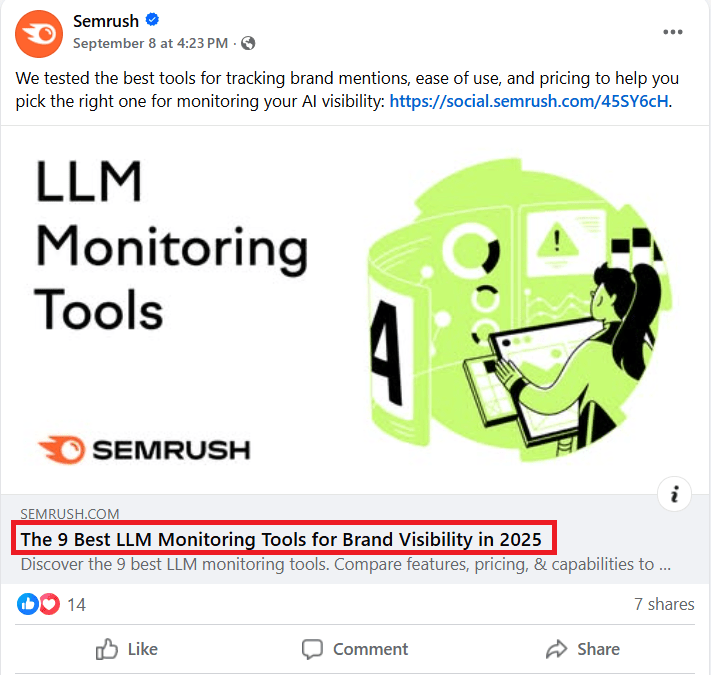
- Messaging apps (like Viber and WhatsApp). Just like social media, these apps use your title tag to generate a clear, descriptive link preview. An engaging title makes people more likely to click on your link, even in a busy group chat.
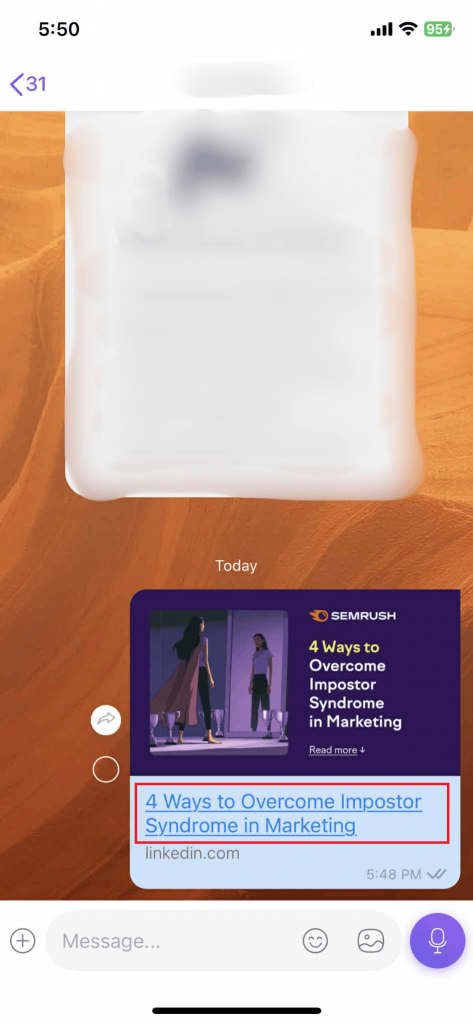
Title tags vs. body tags: What’s the difference?
You might be confused about title tags and body tags. While they’re important in content, it’s good to know what makes them different. Look at this comparison table to know their differences and specific roles:
| Aspect | Title Tag | Body Tag |
|---|---|---|
| Location in HTML | In the <head> section | Encloses main content within the <body> |
| Purpose | Defines the page title; displayed in SERPs and browser tabs | Contains all the main content of the webpage |
| SEO Relevance | Important for SEO; influences page ranking and visibility | Less direct impact on SEO, but houses SEO-relevant content |
| User Interaction | First point of interaction in search results; creates initial impression | Primary area for user engagement with content |
| Visibility | Visible in browser tabs and search engine listings | Not directly visible, but its content appears in the browser window |
| Content Type | Typically a concise, descriptive text | Can include text, images, links, and other HTML elements |
7 best practices for creating the best SEO title tags
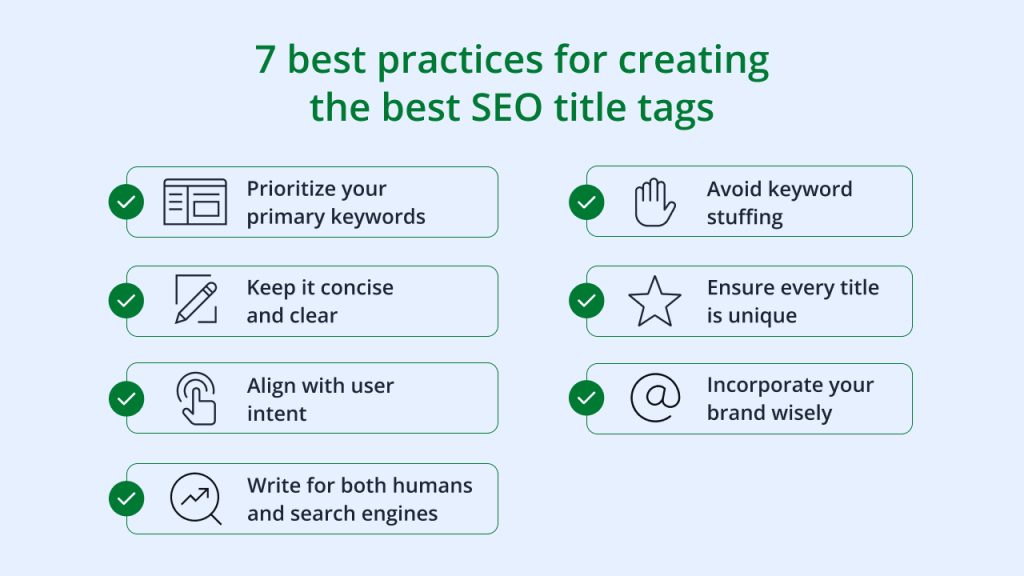
Your title tag should be compelling enough to encourage a click while being clear and informative for search engines. By following these proven best practices, you can create titles that perform at their best:
- Prioritize your primary keywords
- Keep it concise and clear
- Align with user intent
- Write for both humans and search engines
- Avoid keyword stuffing
- Ensure every title is unique
- Incorporate your brand wisely
Prioritize your primary keywords
Include your primary keyword in the title tag as this signals the page’s main topic to both users and search engines. This can help you rank higher and attract the right audience.
Keep it concise and clear
Aim for a length of 50–60 characters to prevent your title from being truncated in search results. While Google can read longer titles, it often rewrites or truncates them for display. You should aim to provide a clear, descriptive message that fits perfectly.
Align with user intent
Craft a title that directly answers what the user is looking for. Whether they’re searching for a guide, a product, or a service, your title should make it clear that your page offers the solution. This is the perfect opportunity to use action words, numbers, or dates to stand out and increase click-through rates.
Write for both humans and search engines
A great title is both engaging and keyword-rich. Avoid using overly mechanical or robotic language. The best titles are natural to read while still containing the keywords necessary for high visibility.
Avoid keyword stuffing
Stuffing your title with too many keywords can hurt your credibility and your SEO. It looks spammy and can negatively impact user experience and click-through rates. Stick to your primary keyword and use others naturally where they fit.
Ensure every title is unique
Each website page should have a unique title tag. Duplicate titles can confuse search engines and make it harder for your individual pages to rank for specific terms.
Incorporate your brand wisely
For brand recognition, consider adding your company name to the end of the title tag. If you have a well-known brand, this can increase click-through rates. For smaller brands, it’s often better to focus on the keywords first and add the brand name last.
Enhance your title tags with our premier SEO services and expertise
Title tags contribute greatly to your SEO. They help search engines understand the hierarchy in your content, which contributes to the ease of reading for users.
Try out Network Solutions’ affordable SEO tool. You can optimize your website so that it ranks higher in search engine results. Plus, you’ll get insights into your website’s performance and identify areas that need improvement.
If you want the help of SEO professionals, you can explore our Professional SEO Services. With this solution, you can focus on your business and let the experts handle the nitty gritty.
Frequently asked questions
Yes, a title tag is necessary. It’s one of the most critical elements for both SEO and user experience. It tells search engines what your page is about and is the first thing users see in search results. Without it, your page will be at a major disadvantage in ranking and attracting clicks.
If you don’t have a title tag, search engines like Google will often create one for you. This auto-generated title is usually based on the main heading on your page (H1) or a snippet of your content. This can lead to a generic, unappealing title that won’t perform well in search, and you lose control over an important piece of your branding and messaging.
You should update your title tags whenever your content significantly changes, your target keywords shift, or your search intent changes. Reviewing your top-performing pages every 6-12 months is also a good practice. If you see a low click-through rate in search console data, testing a new, more compelling title tag can often lead to a boost in traffic.




